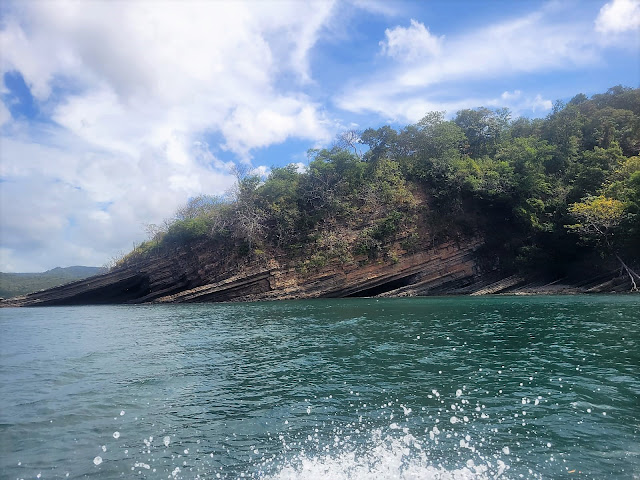The mangrove ecosystem is one of the most important to the world’s economies and one of the most endangered.Plainly explained, mangroves are a variety of shrub and tree species that live along sea shores, rivers, and estuaries. This means a mixture of both salt and freshwater and muddy shores. Mangroves live in the tropics and subtropics. This means hot & humid conditions. Needless to say, not the most ideal conditions for any living thing . However, mangroves are remarkably resilient and adaptive and have evolved to be some of the toughest forests in the world.Basically, mangroves are the ultimate survivors…so far.
Different species of mangrove trees have varying salt tolerance and grow in distinct layers where freshwater streams and rivers meet the sea. Moving in from the ocean the first to appear are red mangrove (Rhizophora mangle) which have the highest tolerance, followed by the black mangrove (Avicennia germinans) , and finally furthest upstream the white mangrove (Laguncularia racemosa) which has the lowest tolerance for salt water.
Mangrove forests are shown to absorb 4-5 times as much carbon as regular forests!
A few fun facts about how amazing the mangroves are.
- Mangroves make up only 1% of our planet’s overall surface, yet they are nearly 5 times more powerful at combating climate change than tropical upland forests.
- Fish and shrimp use the mangroves as a nursery until they are mature and strong enough to venture back into the sea or processed by fishermen or fisheries. This is a huge economic boost for locals.
- Over 100 million people in the world live near mangroves. These mangroves generate approximately $33-$57,000 per hectare annually in coastal preservation, timber, fishing, food, and medicine. Not so shabby for a climate change fighter.
- Mangroves can adapt like aliens! They can morph to balance both saltwater and freshwater environments. They grow extensive roots keeping their trunks above the water line so that they can breathe. And their seeds can change density to either root vertically or float horizontally in order to keep breathing air up to 300 days in order to survive.
- They protect us from hurricanes, tsunamis, and tidal surges! A coastal border of mangroves 100 meters thick can reduce wave height by two thirds! Not to mention, if you tried to build a sea wall with the same protection, it would be MUCH more costly. And a sea wall does not provide fishing or other benefits that generate money rather than maintenance costs.
I thought it would be more intersting to cruise along and look at the mangrove forest together rather than just post a few photos, so I created a short video.
Once out of the forest, the captain put on the speed again, but I was able to take a few more photos.
And then we spotted him!
Naturally, the need to slow down became imminent.
I learned something new about crocodiles on this trip. Crocodiles leave their mouths open while sleeping in order to have their teeth cleaned by those cute little birds that hang around them.
Nothing like having your own portable hygine squadrone.
As we got closer to land, video taping the area became more appealing.
Once back on land, a short trip to Barrio Cangrejal.
In Barrio Cangrejal, there is this wonderful restaurant called Arrecife where one can eat the freshest, fried red snapper EVER!
(source)
(source)
(source)











































So bucolic and serene - you must have gotten up early to get the shots without people. Was the weather always this nice? Great skies. What a wonderful trip it must have been.
ReplyDeleteJohn this side of the country is concidered dry and so the only time they have bad weather is the rainy season which is around September/October and even then the rain lasts only a few hours. People always say Hawaii is paradise, but Hawaii has this constant heavy wind that one does not get in this area, hence I would consider Guanacaste to be paradise. 😉
DeleteI saw a programme about mangroves, amazing trees and they have small torpedoes that drop off and plant themselves in the mud to reproduce. Also you can hold a crocodiles mouth shut with one hand they have very weak muscles to open up, but watch out when they grip closed. Really fascinating place and you have documented it well considering how short a trip it was.
ReplyDeleteIt really was too short. I would have like to seen more of those colorful birds and insects and bugs and....well you know. But I am glad I had this short opportunity. I am going to go bug hunting on my next upcoming trip because I know how much you love bugs 😉
Delete